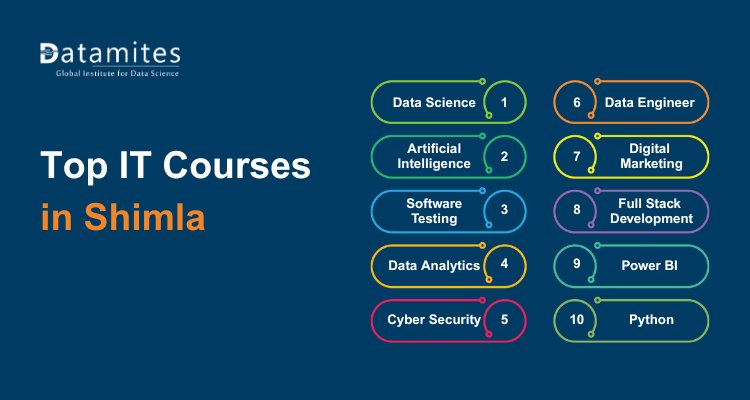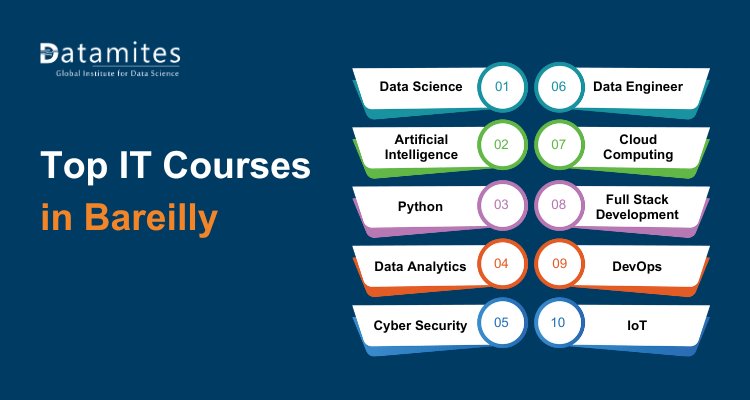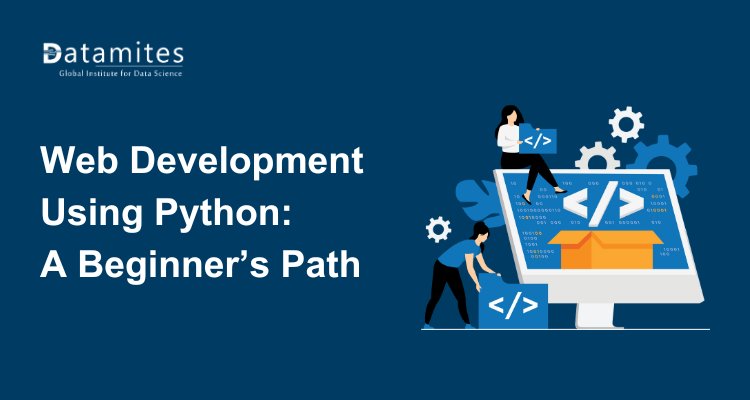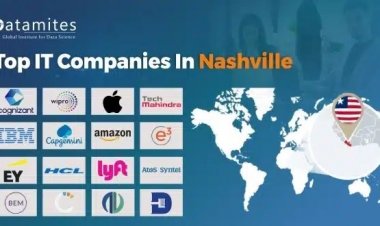Data Visualization Best Practices in Power BI
Learn the best practices for data visualization in Power BI, including effective dashboard design, optimal use of DAX, and interactive reporting techniques to enhance decision-making.

Data visualization transforms complex data into clear, actionable insights, empowering decision-makers to see patterns, trends, and outliers instantly. Effective visualizations unlock the true potential of data, driving informed decisions and strategic actions. In a world where data is generated at an unprecedented rate, effective data visualization is not just a luxury but a necessity. Studies reveal that 90% of the information transmitted to the brain is visual, and visuals are processed 60,000 times faster than text. This underscores the critical role of data visualization in making complex data comprehensible and actionable.
The blog aims to uncover best practices for creating effective visualizations in Power BI, focusing on strategies to enhance clarity, impact, and usability. It provides insights on selecting appropriate chart types, designing intuitive dashboards, and leveraging Power BI features to convey data stories effectively.
Introduction to Power BI
Power BI is a business analytics tool from Microsoft that enables users to visualize and share insights from their data. It allows for the creation of interactive reports and dashboards by connecting to various data sources, including databases, Excel spreadsheets, and cloud services. Users can transform data, create visualizations, and share findings with others. Power BI is known for its user-friendly interface, extensive data connectivity options, and integration with other Microsoft products. It's widely used for making data-driven decisions and presenting complex information in an accessible format.
The global business intelligence market, valued at USD 29.42 billion in 2023, is anticipated to expand significantly. It is projected to reach USD 31.98 billion in 2024 and grow to USD 63.76 billion by 2032. This growth reflects a compound annual growth rate (CAGR) of 9.0% over the forecast period from 2024 to 2032, according to Fortune Business Insights.
Read these articles:
- Introduction to Power BI: What It Is and Why It Matters
- Top 10 Career Paths in Microsoft Power BI
- Power BI vs. Tableau: Choosing the Right Tool
Reasons to Choose Power BI for Data Visualization
Power BI is a powerful tool for data visualization and business intelligence for several reasons:
- Interactive Dashboards: Power BI allows users to create dynamic and interactive dashboards, providing real-time insights through visually appealing charts, graphs, and maps.
- Data Integration: It integrates data from various sources, including databases, Excel spreadsheets, and cloud services, ensuring a comprehensive view of business metrics.
- Custom Reports: Users can create customized reports to meet specific business needs, providing detailed analysis and trend tracking.
- Data Transformation: Power BI includes powerful tools for data cleansing and transformation, ensuring accurate and meaningful visualizations.
- Collaboration: It supports sharing and collaboration through the Power BI service, allowing teams to work together on data analysis and decision-making.
- Accessibility: Available on multiple devices, Power BI ensures that data insights are accessible anywhere, anytime.
Understanding the Importance of Data Visualization
Data visualization plays a critical role in the realm of data analysis and decision-making for several reasons:
Enhanced Comprehension: Humans are generally better at interpreting visual information than raw data. Graphs, charts, and other visual tools can simplify complex data sets, making it easier to grasp patterns, trends, and outliers quickly. For example, a line graph showing sales over time can immediately reveal growth trends or seasonal variations that might be obscured in a table of numbers.
Pattern Recognition: Visualizations can reveal patterns and relationships that might not be obvious through numerical analysis alone. For instance, heatmaps can highlight areas of high and low activity, while scatter plots can show correlations between variables. This capability is especially valuable in exploratory data analysis, where the goal is to uncover insights and generate hypotheses.
Effective Communication: Presenting data visually helps communicate insights more effectively to a broader audience, including stakeholders who may not have a technical background. Well-designed visualizations can convey complex information succinctly and persuasively, aiding in storytelling and ensuring that key points are understood and remembered.
Informed Decision-Making: By providing a comprehensive and intuitive view of data, visualizations support better decision-making. For example, dashboards that aggregate various metrics into a single view allow decision-makers to monitor performance in real time and respond swiftly to changing conditions. This can be particularly crucial in fast-paced business environments where timely insights are essential.
Comparison and Benchmarking: Visualizations make it easier to compare different data sets or benchmark performance against industry standards. Bar charts, for instance, can compare sales figures across different regions, while pie charts can show the market share of various competitors. This comparative view helps in evaluating performance and identifying areas for improvement.
Data Exploration: Interactive visualizations allow users to explore data dynamically, drilling down into specific details or filtering data to focus on particular aspects. This level of interaction can result in deeper insights and a more comprehensive understanding of the data.
Error Detection: Visualizations can also help in identifying data entry errors or anomalies. For example, a sudden spike or dip in a time series plot might indicate a data entry mistake or an extraordinary event that warrants further investigation.
Data visualization transforms raw data into actionable insights by making information more accessible and understandable.
Read these articles:
- What is Datamites Certified Data Analyst Certification
- What is Certified Data Scientist Course?
- What Is AI Engineer Course
Essential Data Visualization Best Practices in Power BI
When working with Power BI, following best practices in data visualization is crucial for creating effective, insightful, and actionable reports. Here are some essential best practices:
1. Understand Your Audience
Tailor your visuals to match the audience's needs and expertise. Executives often prefer high-level summaries and key insights, while data analysts may require detailed and granular data. Adjust the complexity and focus of your visuals accordingly to ensure they effectively communicate the intended message to each specific audience.
2. Choose the Right Visuals
- Charts and Graphs: Use bar charts to compare different categories, line charts to track changes over time, pie charts to display proportions, and scatter plots to explore relationships between variables.
- Tables: Use tables for detailed data that needs to be examined closely.
- Maps: Use maps to display geographical data effectively.
3. Maintain Clarity
To maintain clarity, focus on including only relevant data and eliminate unnecessary elements. Ensure that visuals are purposeful and easily interpretable. Use clear labels, simple design, and appropriate colors to enhance readability. Avoid clutter by presenting information in a streamlined manner, so viewers can quickly grasp key insights. Effective visuals should convey their message at a glance, facilitating immediate understanding.
4. Use Consistent Formatting
- Maintain a consistent color scheme, font style, and size throughout your report to enhance readability.
- Avoid using too many colors; stick to a palette that differentiates categories effectively without overwhelming the viewer.
5. Ensure Data Accuracy
- Verify your data sources and calculations to ensure that the information provided is accurate and reliable.
- Use Power BI’s data validation tools to help with this.
6. Provide Context
- Add titles, labels, and tooltips to help users understand what they’re looking at.
- Use slicers and filters to allow users to interact with the data and focus on specific aspects.
7. Optimize Performance
- Reduce the complexity of visuals and the amount of data being processed to improve performance.
- Use aggregations and filters to manage large datasets efficiently.
8. Leverage Interactivity
- Use features like drill-throughs, bookmarks, and dynamic tooltips to make your reports interactive and engaging.
- Allow users to explore the data and discover insights on their own.
9. Prioritize Key Metrics
- Highlight important metrics and trends to ensure they are immediately visible and actionable.
- Use KPIs and visual indicators to emphasize critical performance measures.
10. Test Across Devices
- Make sure your visualizations are adaptable and visually appealing across various devices, including desktops, tablets, and smartphones.
- Check usability and readability across different screen sizes.
11. Provide Insights, Not Just Data
- Aim to tell a story with your data, guiding users to understand the implications and make informed decisions.
- Use annotations or commentary to provide insights or highlight key findings.
12. Stay Updated
- Consistently refresh your visuals and data sources to ensure they represent the latest information.
- Stay updated on new features and best practices in Power BI to continually enhance your reports.
To master these best practices, consider enrolling in Power BI Training programs and Power BI Certification Courses. These resources will provide you with in-depth knowledge and hands-on experience, helping you to apply these practices effectively and stay at the forefront of Power BI developments.
Refer these articles:
- How to Become a Power BI Developer in India?
- Power BI Course Fee in India
- How to Become A Data Analyst
Case Studies and Use Cases
Power BI, Microsoft's business analytics service, is widely used for its robust data visualization and reporting capabilities. Here are a few case studies and use cases that illustrate how different organizations and industries leverage Power BI:
Business Case Studies: Real-World Examples
To illustrate the practical applications of Power BI, let's explore some real-world case studies:
Case Study 1: Retail Giant Optimizes Inventory Management
- Challenge: Overstocking and understocking issues leading to lost revenue and increased costs.
- Solution: Implemented Power BI dashboards to track inventory levels, sales trends, and customer demand patterns. By analyzing this data, the retailer optimized stock levels, reduced out-of-stock situations, and improved overall inventory turnover.
Case Study 2: Healthcare Provider Improves Patient Care
- Challenge: Inefficient patient data management and difficulties in identifying high-risk patients.
- Solution: Leveraged Power BI to create interactive dashboards displaying patient demographics, medical history, and treatment outcomes. This enabled healthcare providers to identify at-risk patients, improve care coordination, and reduce readmission rates.
Case Study 3: Financial Institution Improves Risk Management
- Challenge: Difficulty in identifying potential fraud and assessing financial risks.
- Solution: Utilized Power BI to visualize financial data, detect anomalies, and monitor market trends. By proactively identifying risks, the financial institution was able to protect its assets and make informed investment decisions.
Industry-Specific Applications of Power BI
Power BI is a versatile business intelligence tool with applications across various industries. Here’s how it can be used in finance, healthcare, and retail:
Finance
Power BI enhances financial management by offering interactive dashboards for real-time tracking of revenue, expenses, and profitability, which aids in financial reporting and analysis. It supports risk management by integrating data from various sources to monitor market, credit, and operational risks. Additionally, Power BI streamlines regulatory compliance by automating compliance report generation and tracking regulatory changes, ensuring institutions remain aligned with financial regulations.
Healthcare
Power BI empowers hospitals and clinics by offering advanced analytics in patient care, operational efficiency, and financial management. It tracks patient outcomes, readmission rates, and treatment effectiveness to enhance care quality. It also tracks key performance metrics like bed occupancy, patient wait times, and staff utilization to improve operational efficiency. Financially, Power BI aids in budget management, expense tracking, and revenue analysis, promoting cost-effectiveness and informed financial planning.
Retail
Retailers can leverage Power BI to enhance their operations by analyzing sales data, managing inventory, and forecasting demand to optimize stock levels and refine sales strategies. It also provides insights into customer behavior and preferences, enabling personalized marketing and improved customer experiences. Additionally, Power BI allows for performance monitoring across stores, comparing sales, and tracking key performance indicators (KPIs), facilitating data-driven decisions to boost overall business performance.
In each of these industries, Power BI’s ability to integrate data from multiple sources, create interactive visualizations, and provide actionable insights makes it a valuable tool for decision-making and strategic planning.
Data visualization is a crucial skill in today's data-driven world, enabling businesses and individuals to make sense of complex datasets. Power BI, with its robust features and user-friendly interface, has become one of the leading tools for data visualization. To harness the full potential of Power BI, it's important to follow best practices, such as maintaining consistency in design, ensuring clarity and simplicity, and choosing the right chart types for your data. These practices help to communicate insights effectively and support decision-making processes.
For those looking to enhance their skills in data visualization with Power BI, DataMites Institute offers a range of comprehensive courses designed to build expertise in this powerful tool. The training program not only covers the fundamental aspects of Power BI but also delves into advanced techniques to ensure you can create impactful visualizations and insights.
DataMites Training Institute offers a globally accredited Power BI course, ensuring industry recognition and career advancement. The program covers data visualization, DAX, report automation, and dashboard creation, with hands-on projects and expert-led training. With flexible learning modes (online and classroom), it caters to both beginners and professionals. Earn a globally recognized certification and excel in data analytics and business intelligence with DataMites!
DataMites Institute is known for offering comprehensive training in data science, data analytics, machine learning, and artificial intelligence. DataMites is known for its high-quality instruction and practical approach, which is endorsed by prestigious organizations such as IABAC and NASSCOM FutureSkills. By enrolling in a Power BI course at DataMites, you're not only gaining practical skills but also aligning yourself with recognized industry certifications that can enhance your professional profile.





